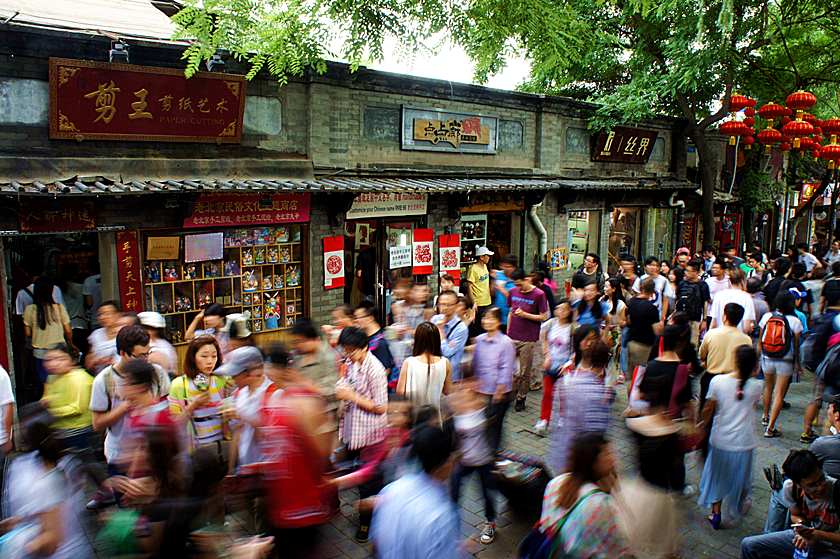Chinese Name: 南锣鼓巷 Pronunciation: nán luó gǔ xiàng
English Name: Nanluoguxiang or South Gong and Drum Lane
Opening Hours: 24 Hours
Ticket: Free
Building time: 1267
Recommended Time for Visit: 2 Hours
Address: Nanluoguxiang Lane, Dongcheng District, Beijing
Building Function: a residential and commercial area
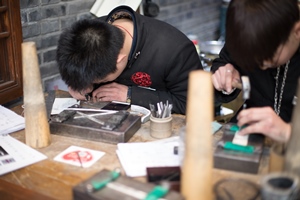
Located in Beijing’s Dongcheng District, Nanluoguxiang is a place featuring traditional Beijing hutongs. Being famous as one of the oldest hutongs in Beijing, Nanluoguxiang has a history of more than 700 years and profound culture. It is 786 meters long, and 8 meters wide. The layout of Nanluoguxiang is unique, both sides of it are linked to eight east-west hutongs. Thus, it looks like a centipede and is also nicknamed Wugongxiang. Wugong is the Chinese pronunciation of centipede. It not only has many attractions but also is close to other famous travel destinations in its vicinity, which are the Forbidden City, Houhai, Beijing Shichahai, Drum Tower, and Yandaixie Street.
There are many hutongs in Beijing, which are characterized by traditional Beijing courtyards, and Nanluoguxiang is one of them, the oldest and most original one. Experiencing a hutong or courtyard life is a necessity for visitors, especially those from south China and other countries. Nanluoguxiang is a good choice for travelers who want to see an authentic Beijing courtyard because here most of the traditional Beijing residential dwellings remain intact. The descendants of traditional Beijingers(Beijingnese) in Nanluoguxiang are still living here, so the original lifestyles of Beijingers are well retained. Speaking Beijing dialect, eating Beijing food, and going for a walk with a bird fully display a Beijing flavor.
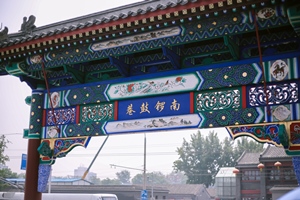
There are many things one can do in Nanluoguxiang. First, a visitor can take a Hutong tour by rickshaw. It is a must-do thing for visitors to experience hutongs in a short time. The rickshaw puller may talk about the history of some hutong while one is taking a rickshaw, giving one a feeling of hospitability and relaxation. Second, one can visit a local family in Nanluoguxiang and learn how to make authentic Beijing dishes. Being a cooking helper in the process of making traditional Beijing dishes is a wonderful experience to enjoy Beijing food. The locals are very hospitable and welcoming. They are patient to teach cool skills. Last, one can explore traditional Beijing snacks at night. It is better for a traveler to have a local guide to take him/her to have snacks. For some foodies, it is a food paradise. Apart from these, a visitor can have drinks in a hutong bar which is an integration of western culture and Beijing culture.
It is undoubtedly that Nanluoguxiang is a priority given by travelers at home and abroad.
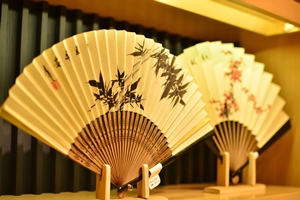
Nanluoguxiang has a reputation as one of the oldest hutongs with a history of more than 700 years. In 1215, the Mongolians occupied Beijing, then they started building their empire whose capital was called Yuan Da Du.
In 1267, Nanluoguxiang was built and functioned as a market area in Yuan Da Du’s urban layout. According to the architectural codes of that time, the roads of different widths had different names. A 36-meter-wide road was named a standard street, an 18-meter-wide road was called a small street, and a 9-meter-wide one was a hutong. Thus, Nanluoguxiang essentially consists of hutongs.
In the Ming Dynasty (1368-1644) and the Qing Dynasty (1644-1912), the governments were keen on extending the size of the city, and many walled areas were built. Meanwhile, the governments relaxed the restriction on building residential dwellings, so people from different classes built their courtyards which are also called siheyuan. The area of Nanluoguxiang became larger than ever before and had the size today. The lane was called “Luoguo” (humpback in Chinese) in the Ming Dynasty, due to the middle part higher than the two sides.
In 1750, the name of the lane was changed to Luoguxiang. It was divided into two parts: Nanluoguxiang and BeiLuoguxiang(now within the Tian’anmen community). The name, Nanluoguxiang, is now still being used.
Chinese government attached great importance to the protection of ancient Chinese architecture and cultural relics. In 1990, Nanluoguxiang was listed among historical buildings for preservation by Beijing Municipal Government.
In recent years, some sites of Nanluoguxiang have been listed for preservation on different levels. With an attractive historical and cultural background, Nanluoguxiang has become a hit travel destination.
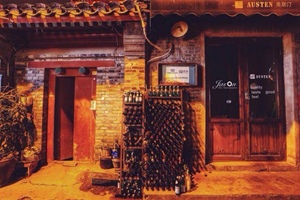
In 1990, the master of architecture, Wu Liangyong, presided over the project of reconstruction of dilapidated houses in Ju’er Hutong. According to his urban planning theory, he thought it was necessary to preserve historical buildings in the process of reconstruction. Rehabilitating shabby but still useful buildings and demolishing dilapidated houses not only kept the charm of courtyards(siheyuan) but also made them liveable for modern people. It is under the guidance of his urban planning theory that many historically valuable Beijing hutongs survived during the development process of Modern Beijing. Ju’er Hutong is the exact fruit of the theory.
Mao’er Hutong is 585 meters long and 7 meters wide, running east and west, known for numerous old residences, celebrities, and legendary stories. It is one of the top 10 hutongs in Beijing. Mao’er Hutong contains many famous historical and cultural sites, such as Ke Yuan, the former Residence of Wan Rong, the Former Residence of Feng Guozhang, etc.
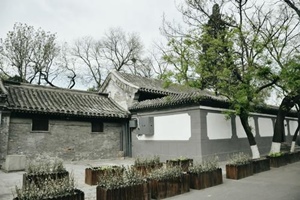
Located in odd numbers from No.7 toNo.15 of Mao’er Hutong, Ke Yuan was originally the residence and garden complex where the office of the late Qing Dynasty, Wen Yu lived. The five courtyards are linked together, covering an area of 7000 square meters. The garden was built in 1861. Its architecture imitated Lion Grove and Humble Administrator’s Garden in Suzhou. Ke Yuan is regarded as the private garden of great artistic merit in the late Qing Dynasty. It was officially listed into the National Priority Cultural Relic Protection Sites.
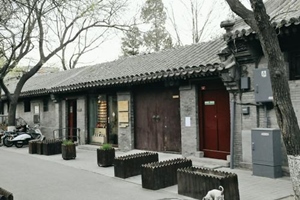
Located in NO.35 and No.37 of Mao’er Hutong, it is the Former Residence of Wan Rong, who was the last empress of the Qing Dynasty. This place is known as Queen House. The mansion was built by her grandfather and had been reconstructed since 1922. What the most attractive to visitors is the exquisite craftsmanship of the buildings in the mansion. It has been listed for Beijing municipal level preservation.
No. 11 of Mao’er Hutong was a former residence where a Chinese warlord, Feng Guozhang once lived.
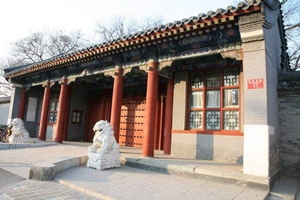
The Royal Residence of Seng
The first hutong one can see is the Chaodou Hutong when one enters the south entrance of Nanluoguxiang. It was the former residence of the Seng Clan (a noble in the Qing Dynasty). It has been listed as district-level preservation.
Yu’er Hutong is 343 meters long, and 5 meters wide, extending east and west. It is famous as the residences of such celebrities as Qi Baishi, Luo Rongheng, and Li Yu. In recent years, with the gradual popularity of Nanluoguxiang, Yu’er Hutong has also become a hot travel destination.
Yu’er Hutong was reconstructed due to deteriorating living conditions, such as growing population, aging, and overcrowding.
In September 2015, the reconstruction project was launched by the government for improving people’s living standards. The government organized 8 groups of designers of traditional Chinese architecture and historical consultants and 3 teams of professional workers who are good at rehabilitating ancient Chinese architecture. They demolished once haphazardly built houses and reconstructed the residences in the style of traditional Chinese architecture. In meanwhile, they equipped the houses with modern infrastructure, maintaining the original style of the courtyards and strengthening the sense of well-being.
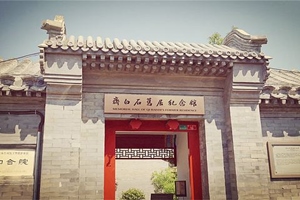
Located in No. 13 of Yu’er Hutong, the former residence of Qi Baishi(1864-1957) is known as a place where the great master of Chinese painting, QiBaishi, once lived. The courtyard is well protected. It was not whitewashed for keeping its authenticity. It is now open to the public, with a ticket fare of 5 yuan. Some items Qi Baishi used have been preserved. The exhibition of his work is held in the courtyard, which meets the appetite of visitors who aspire to see the master’s work.
Pass By Bar is a street restaurant where many travelers visit. It has a comfortable and relaxing environment, with green bushes and trees. It is a typical courtyard decorated with the traditional Beijing style. Shish Kebab Pizza and Kung Pao Chicken Pizza are initiated by themselves which are very popular.
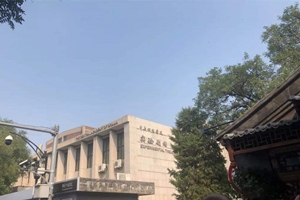
Located in No.39 of Mianhua Hutong, Dongcheng District, the Central Academy of Drama is known as the top university of studying theatrical performances and film and TV performances in China. It covers a small area but has cultivated many distinguished actors and actresses, such as Cheng Daoming, Zhang Ziyi, Gong Li, and Jiang Wen. It is a paradise for students who pursue their stage dreams.
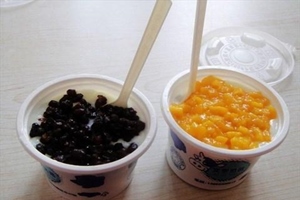
Wu Yu cheese is an authentic Beijing-style snack. It is made from milk, sugar and glutinous rice wine, with a light taste. Iced dark plum soup is a good choice in summer to cool oneself down. There are also other delicious snacks giving visitors a good appetite. Being cost-efficient and delicious is attractive to travelers at home and abroad. Therefore, when one comes here, he/she may be surprised to see that so many people line up outside the shop. The shop provides a limited number of food, so queuing up ahead is necessary.
a. Enter the North Entrance of Nanluoguxiang→Ju'er Hutong→Former Residence of Qi Baishi→Wen Yu Cheese Shop→Pass By Bar→Mao’er Hutong→Ke Yuan→Former Residence of Feng Guozhang→Former Residence of Wan Rong→Yu’er Hutong→The Central Academy of Drama→Chaodou Hutong→Royal Residence of Seng→the South Entrance of Nanluoguxiang
b. Enter the South Entrance of Nanluoguxiang→Chaodou Hutong→Royal Residence of Seng→The Central Academy of Drama→Yu’er Hutong→Mao’er Hutong→Former Residence of Wan Rong→Former Residence of Feng Guozhang→Ke Yuan→Ju'er Hutong→Pass By Bar→Wen Yu Cheese Shop→Former Residence of Qi Baishi→the North Entrance of Nanluoguxiang
a. Take bus 42, 701, and get off at Di’anmen Dong Station
b. Take bus 5, 60, 82, and get off at Drum Tower, then to 107 or 124 and get off at Baocho Hutong Station
c. Take bus 13, 118, 3, 612, 60 and get off at Luoguxiang Station
d. Take bus 124, 107, 635, and get off at Baochao Hutong Station
By Subway
Take subway Line6/Line8 and get off at Nanluoguxiang Station
By Taxi
Chinese: 请带我去南锣鼓巷。English: Please take me to Nanluoguxiang.
Chinese: 请带我去南锣鼓巷的北门。English: Please take me to the North Entrance of Nanluoguxiang.
Chinese: 请带我去南锣鼓巷的南门。English: Please take me to the South Entrance of Nanluoguxiang.
If you go to Nnaluoguxiang from the Beijing Capital International Airport, it takes about 40 minutes (90 yuan).
If you go to Nnaluoguxiang from the Beijing West Train Station, it takes about 30 minutes (40 yuan)
If you go to Nnaluoguxiang from the Beijing Train Station, it takes about 25 minutes (30 yuan).
If you go to Nnaluoguxiang from the Beijing South Station, it takes about 35 minutes (50 yuan).
